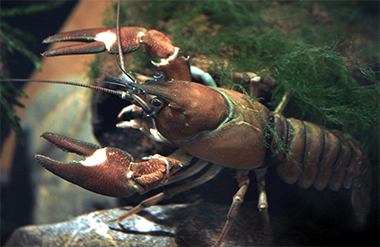Water users urged to take precautions to avoid spread of crayfish plague.
The Department of Agriculture, Environment and Rural Affairs (DAERA) has urged water users, both recreational and commercial to take precautions when visiting the River Blackwater catchment in Co Tyrone.
The warning comes after some dead native white-clawed crayfish (Austropotamobius pallipes) were discovered during routine field surveys at the headwater of the River Blackwater near Aughentaine.
The crayfish were subsequently laboratory tested for the presence of crayfish plague (Aphanomyces astaci) and the preliminary test results confirmed that all three samples tested positive.
Crayfish plague (Aphanomyces astaci) is a type of water mould and outbreaks are characterised by mass mortalities of native crayfish without any apparent effect on other aquatic organisms.
All relevant organisations will be working to prevent the spread of this outbreak to other catchments in the area.

A spokesperson for DAERA said: “If you think you may have found some infected crayfish please enter the location, images and any other details at:
http://www2.habitas.org.uk/
“Crayfish plague tends to move upstream, but at this location it is already high up the catchment, so there may be mortalities further downstream. All field staff will be asked to check the area for any further dead crayfish and will be instructed to collect them if they do and send for further testing until we establish the extent of the outbreak.”
This organism, based on previous incidences across the island of Ireland, has the potential to severely damage the crayfish population, thereby causing an ecological imbalance in the river.
Anyone using this river or any others in the catchment are being urged to observe the “Check, Clean, Dry” and “Stop the spread” biosecurity protocols after leaving the river or before returning to it again.
DAERA’s advice is:
* Check your equipment and clothing for living organisms.
Pay particular attention to areas that are damp or hard to inspect
* Clean and wash all equipment, footwear and clothes thoroughly.
If you do come across any organisms, leave them at the water body where you found them
* Dry all equipment and clothing – some species can live for many days in moist conditions
Make sure you don’t transfer water elsewhere.
More details about biosecurity for water users and identifying crayfish plague can be found on the Invasive Species Ireland website:























